Head-turning homes in the 2022 SA Architecture Awards
The residential entries in the 2022 SA Architecture Awards range from extreme extroverts to some shy types in character neighbourhoods, while a record number of apartment buildings mark that sector’s coming of age.

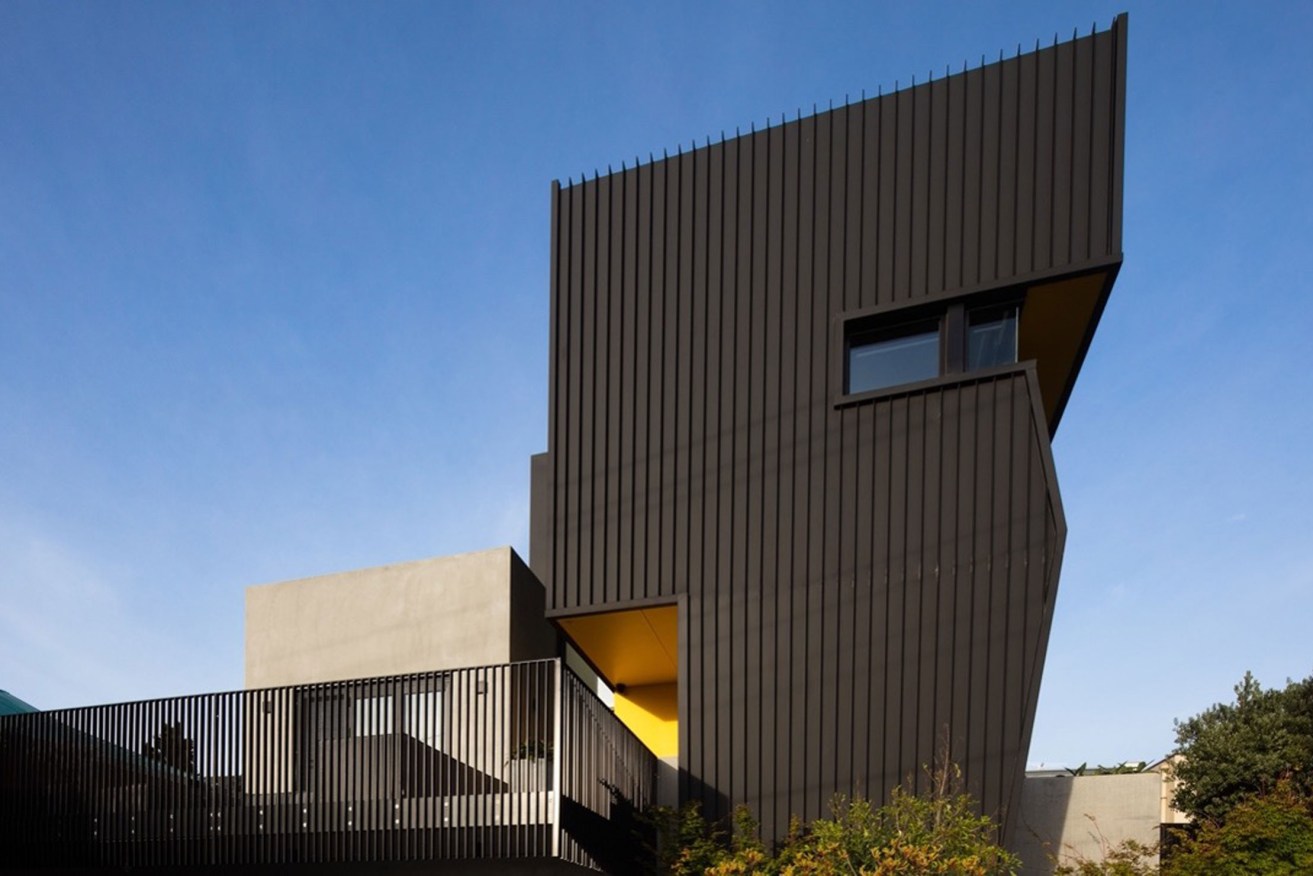
'Henley Residence', by Tridente Boyce, is a standout in the coastal category. Photo: Simon Cecere
Exposed ocean esplanades and secluded heritage streetscapes provide very South Australian contexts for this year’s residential entries in the Australian Institute of Architecture Awards.
In the coastal category, Tridente Boyce’s “Henley Residence” is a standout with its daring, brooding form sited on a steep, elevated sandhill. Three distinct living zones respond to the prevailing topography while an elegant cantilever staircase provides the salient internal feature.

‘Henley Residence’ interior. Photo: Simon Cecere
Situated on the busy foreshore strip between Brighton and Hove, Black Rabbit’s “number 106a” is very much in the public eye, its multiple monochrome aspects saying: “Look at me… I’m a little bit different!”
Decked with neutral tones and textures, the light, airy interior creates an easy transition between living, socialising and personal spaces to support an inspiring work-from-home lifestyle.
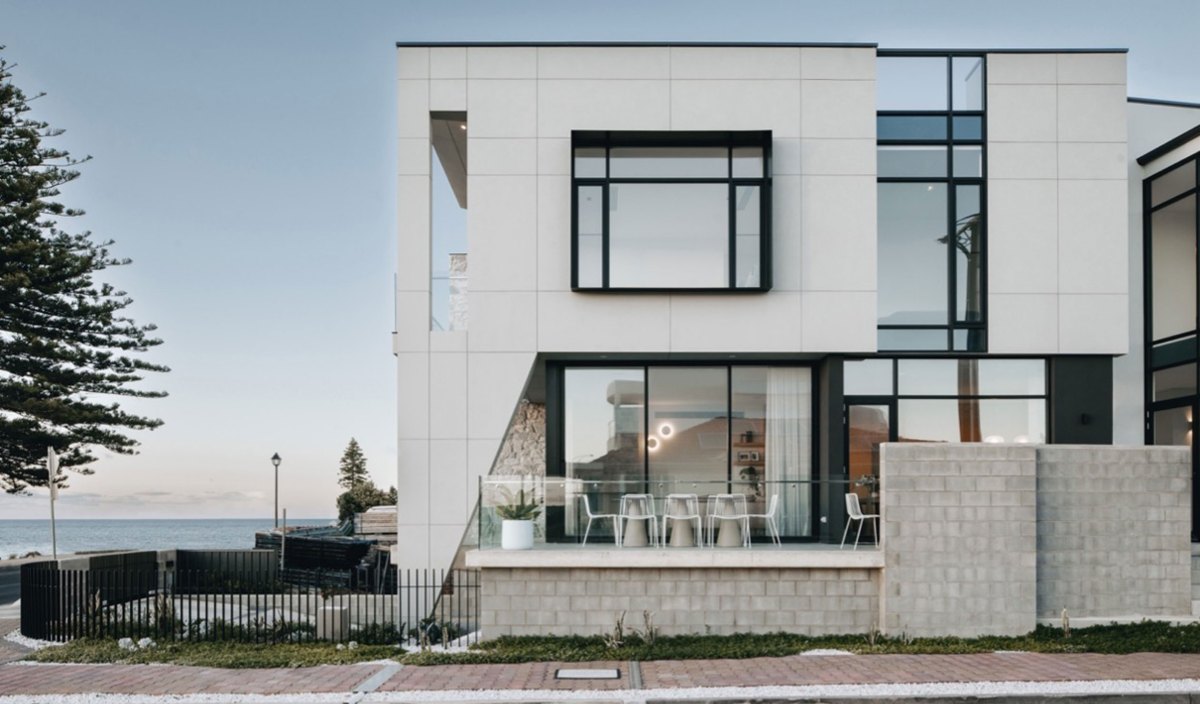
‘Number 106a’, by Black Rabbit, at Hove. Photo: Christopher Morrison
Further south along the coast, BB Architects’ “Aldinga Beach House” is designed to function as a holiday house for multiple generations for the time being, and to become a main place of residence in the longer term.
In a generous design on this large esplanade block, the main living and entertainment areas take in expansive ocean views, while self-contained guest quarters embrace the hills aspect to the east. A swimming pool and spa are nestled into the north side of the house, avoiding the prevailing winds and capturing the winter sun.
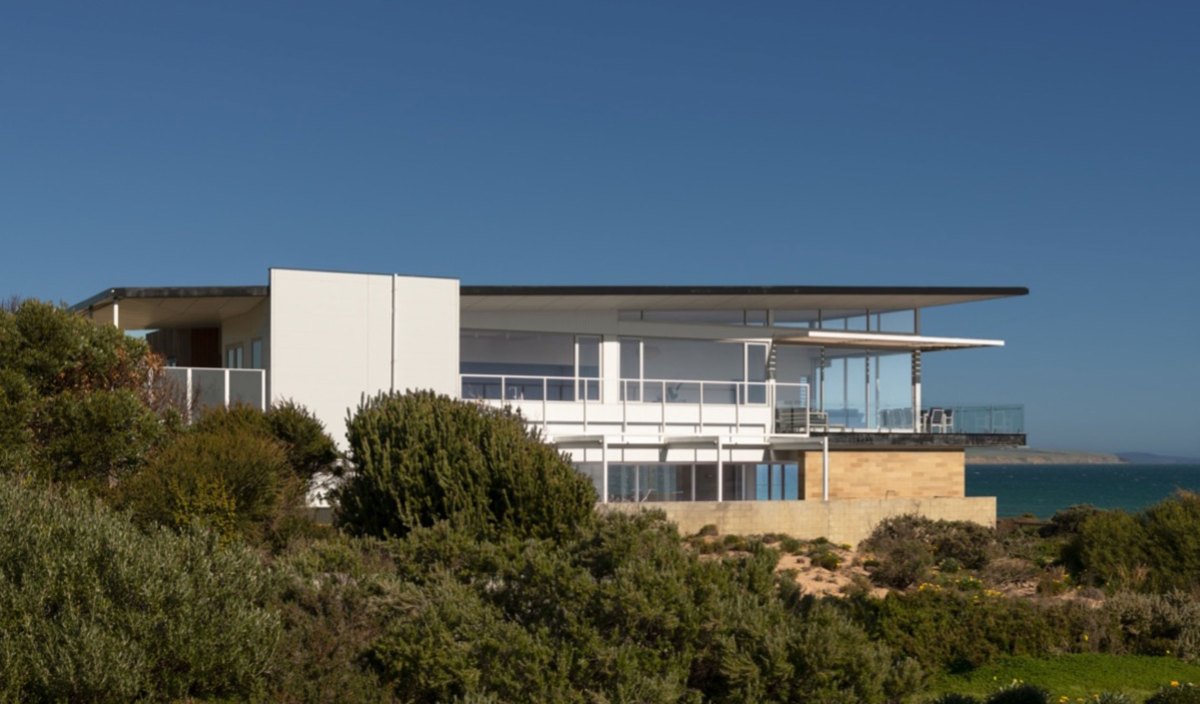
BB Architects’ ‘Aldinga Beach House’. Photos: Corey Roberts

The interior and balcony view from ‘Aldinga Beach House’. Photos: Corey Roberts
Even more grandiose is another “forever home” with scope to accommodate present and future generations at Balhannah. Evoking a luxury tourism resort, Atelier Bond’s aptly named “Big House on the Hill” extends for 65 metres through three distinct pavilions boasting uninterrupted Adelaide Hills views from every room.
A 6m-high rammed-earth spine provides texture, strength and thermal stability, as well as fire resistance in this renowned bushfire zone. Shared living spaces are kept warm with operable double-glazed windows and a substantial stack bond fireplace.
The roofline of the “Big House” is increasingly pitched, folding upwards to capture the full morning sun, while a carefully considered textural mix softens the interior, forming intimate experiences on a grand scale.
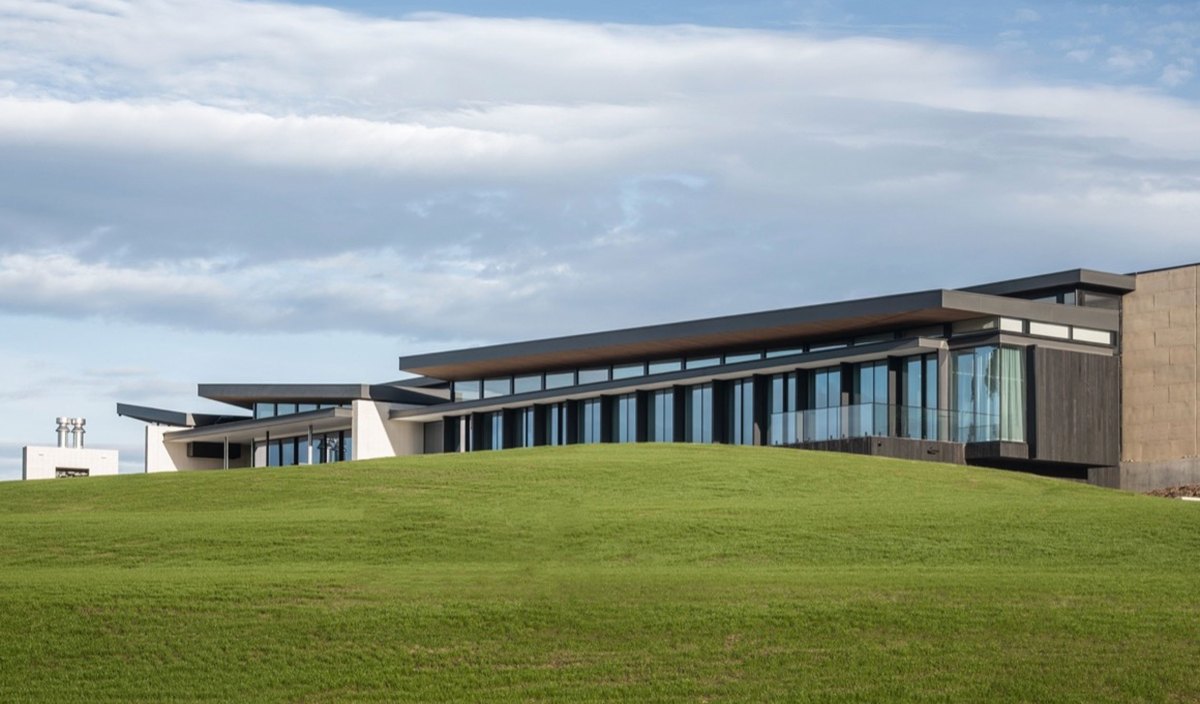
Atelier Bond’s ‘Big House on the Hill’, at Balhannah. Photo: David Sievers
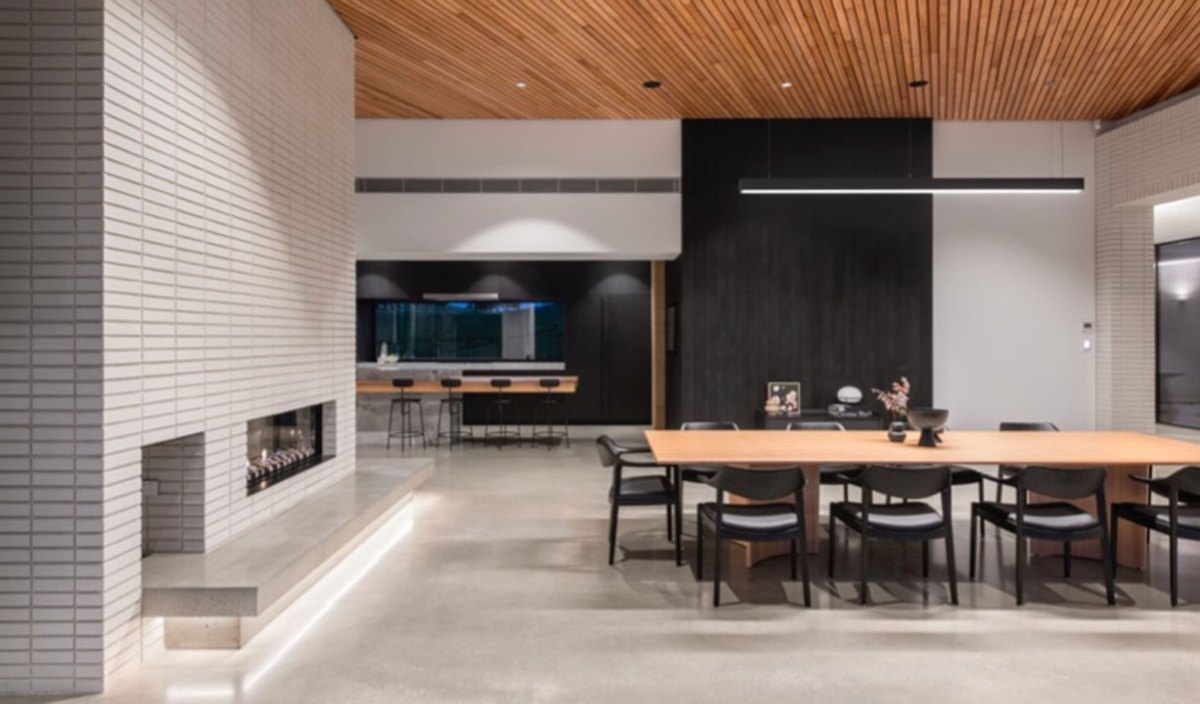
Inside the ‘Big House on the Hill’. Photo: David Sievers
Moving into the milieu of the heritage streetscape are a number of contemporary architectural insertions that respond to their surroundings in distinctive ways.
At the understated end of the spectrum is Max Pritchard Gunner’s “Brook Bridge” in Willunga, which disappears behind a cluster of silver birch trees in deference to its heritage-listed elderly neighbour. Behind the hidden façade, a delightfully simple linear house with expansive roof overhang spans the creek and garden.
Winter light and double glazing on the northern aspect keep the occupants warm, while the overhang provides summer protection, in a quintessentially joyful Pritchard Gunner design.

Max Pritchard Gunner’s ‘Brook Bridge’ house, at Willunga. Photos: Sam Noonan
Back in the city, imaginative approaches by Das Studio, Con Bastiras and Ashley Halliday Architects echo the rhythm, forms and detailing of their respective character neighbourhoods while producing solutions that are uncompromisingly contemporary.
Das Studio’s “Iron Chef” house at Millswood uses a double-height void to create a generous connection between levels – framing a view to the red gums behind – while Bastiras discretely tucks a second storey under the hipped roof line of his “Norwood House”.
Two gabled pavilions sit perpendicular to one another at Halliday’s “Parkside Residence”, creating interstitial spaces that break down mass and incorporate the garden landscape. The main living pavilion here follows its gabled roof form with a steel portal frame, while textured oak ceiling battens add warmth, rhythm and perspective.
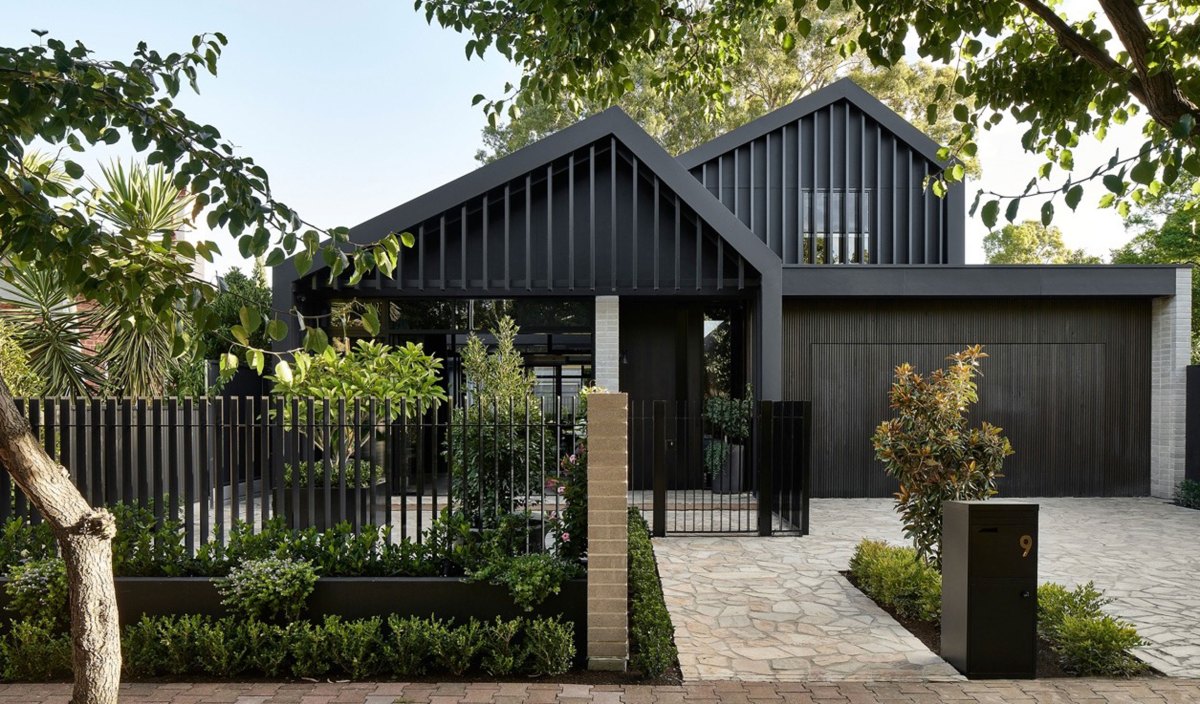
‘Iron Chef’ house, by Das Studio, at Millswood. Photo: Anthony Basheer

Left: ‘Norwood House’, by Con Bastiras. Photo: Airworks. Right: ‘Parkside Residence’, by Ashley Halliday. Photo: Anthony Basheer
A second entry from Black Rabbit (“number 14”) confidently asserts itself among the traditional housing typology of a leafy Adelaide suburb, nodding its head to the original bungalow it replaced. Monochromatic juxtapositions of texture and form stand watch over the street, beckoning visitors to enter the warm and inviting interior.
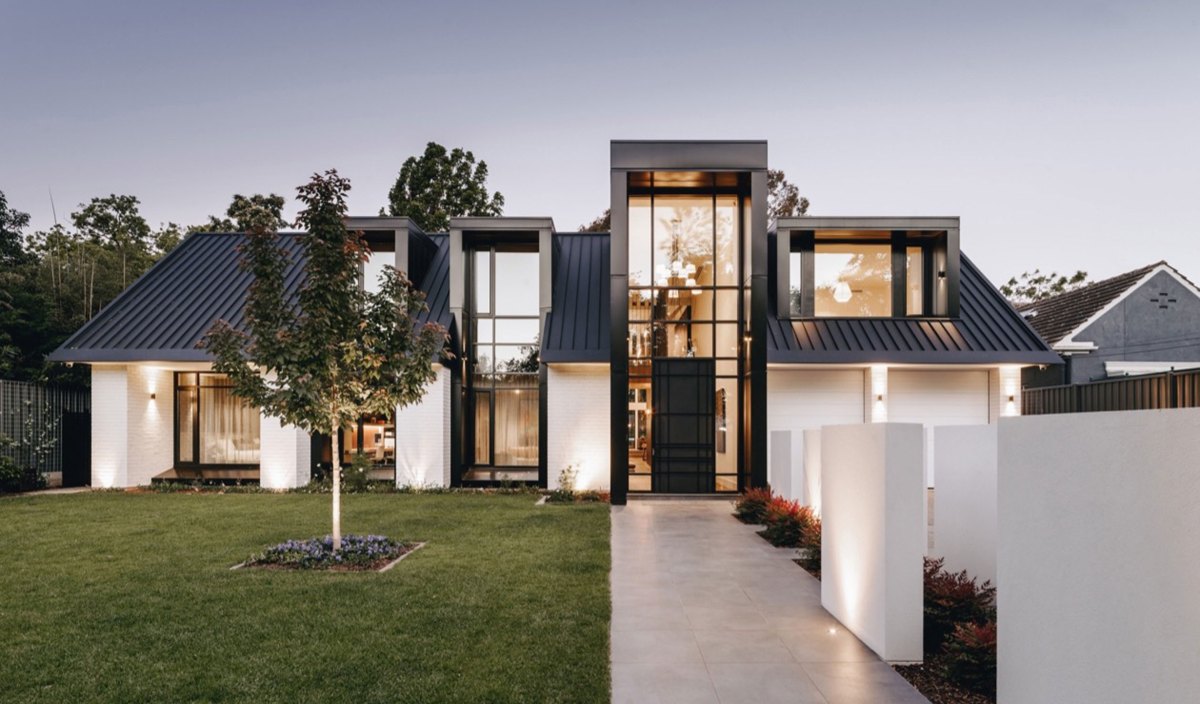
‘Number 14’, by Black Rabbit, at Heathpool. Photo: Christopher Morrison
In another nearby leafy suburb, “Jacaranda House” by Architects Ink is made up of a series of modernist masonry volumes that radiate around an existing jacaranda tree. The variation in floor levels and ceiling heights, along with carefully considered courtyards, voids, openings and skylights, create a daily dance of light to showcase the textural and tonal architecture and enrich the spatial experience.
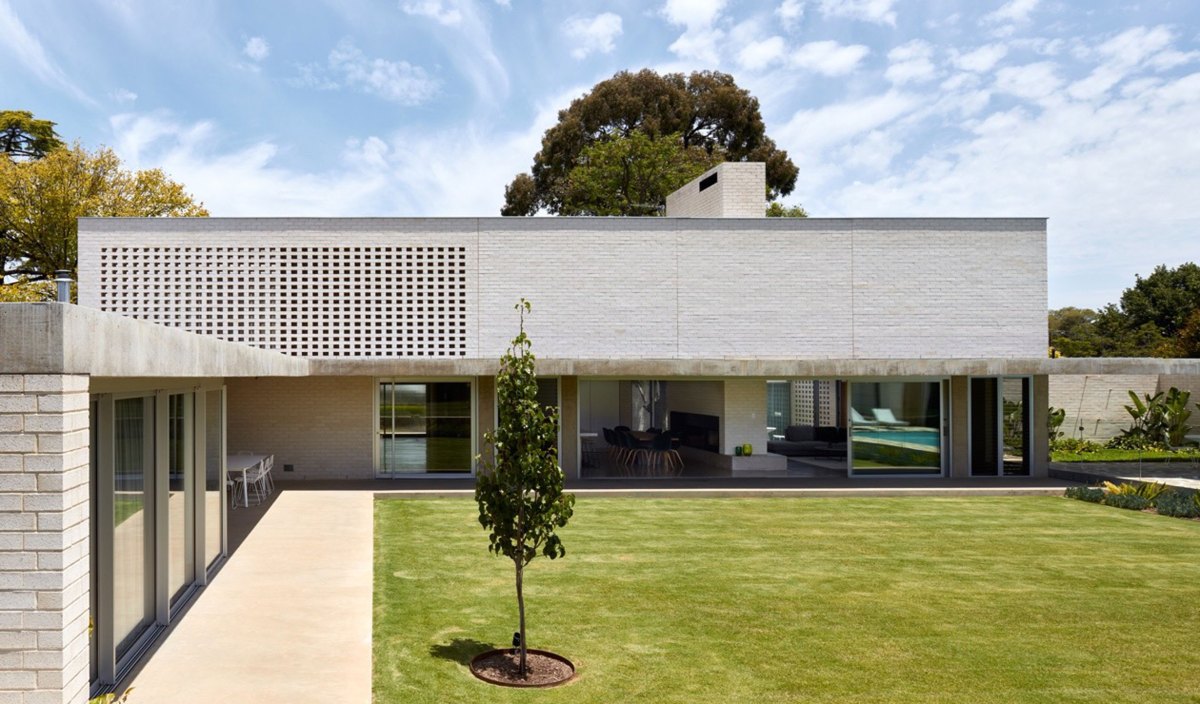
‘Jacaranda House’, by Architects Ink. Photo: Sam Noonan
The theme of insertion continues into the apartment housing category. In a hitherto neglected location between Victoria Square and Hurtle Square, Penny Place Apartments follows sister development Kodo Apartments to deliver a new inner-city residential precinct that integrates with the existing neighbourhood and squares through pedestrian and cyclist paths and sensitive podium setbacks.
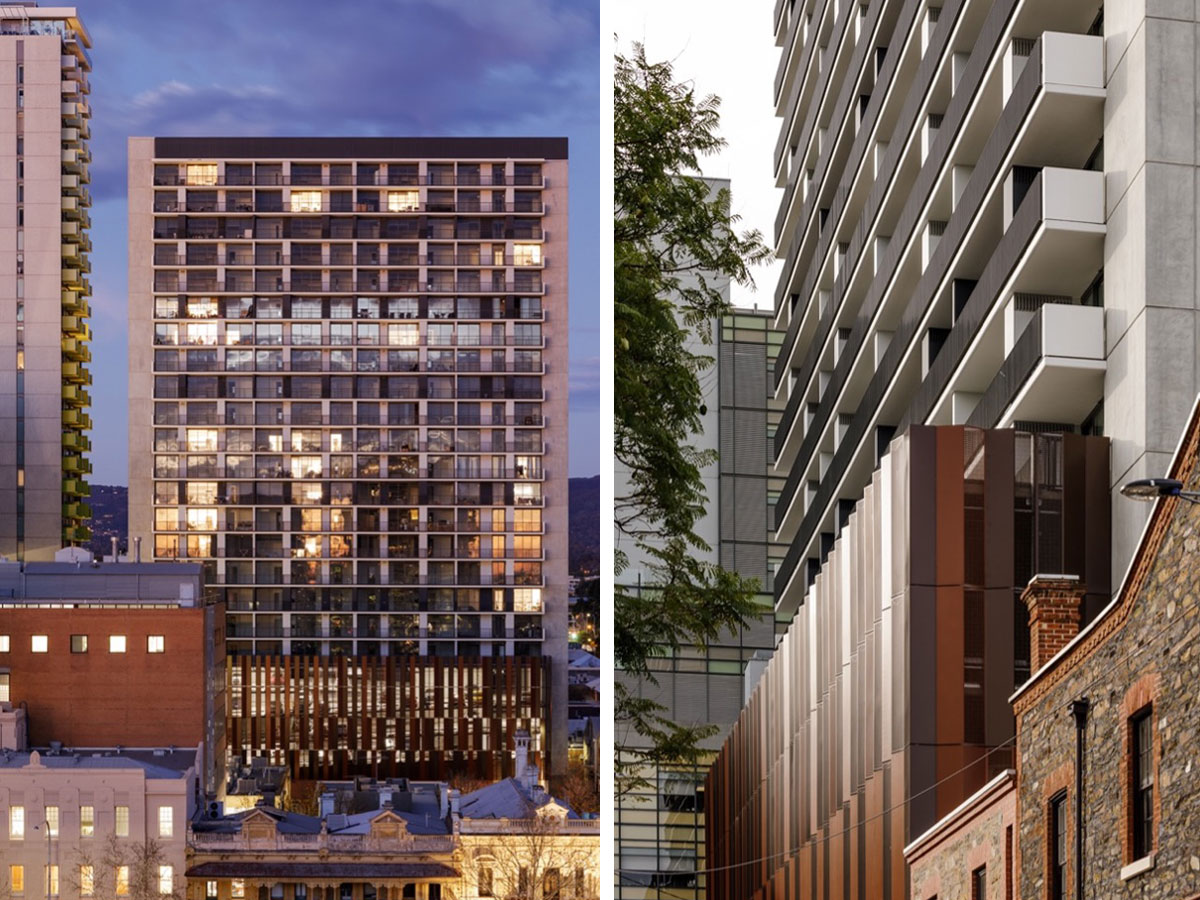
The ‘Penny Place’ and ‘Kodo’ apartments residential precinct by Woods Bagot. Photo: Trevor Mein
Two textbook insertions at North Adelaide and Parkside combine restoration and adaptive reuse of culturally significant heritage buildings with taller, elegant contemporary towers.
PACT architects’ residential tower at Brougham Place sits respectfully behind the reactivated state heritage-listed house and stables, its use of zinc and stone referencing the heritage context, while JPE’s One On The Park restores and retains state-heritage-listed St Margaret’s House in a higher-density, mixed-use community. The residential building’s alternating angular walls act as apertures for views of the Parklands and Adelaide hills, creating a dynamic exterior facade of light and shade.
A smaller-scale office building and group of townhouses take their cues from the heritage building, while consistency of materiality and the grouping of elements establish a single identity across the site.
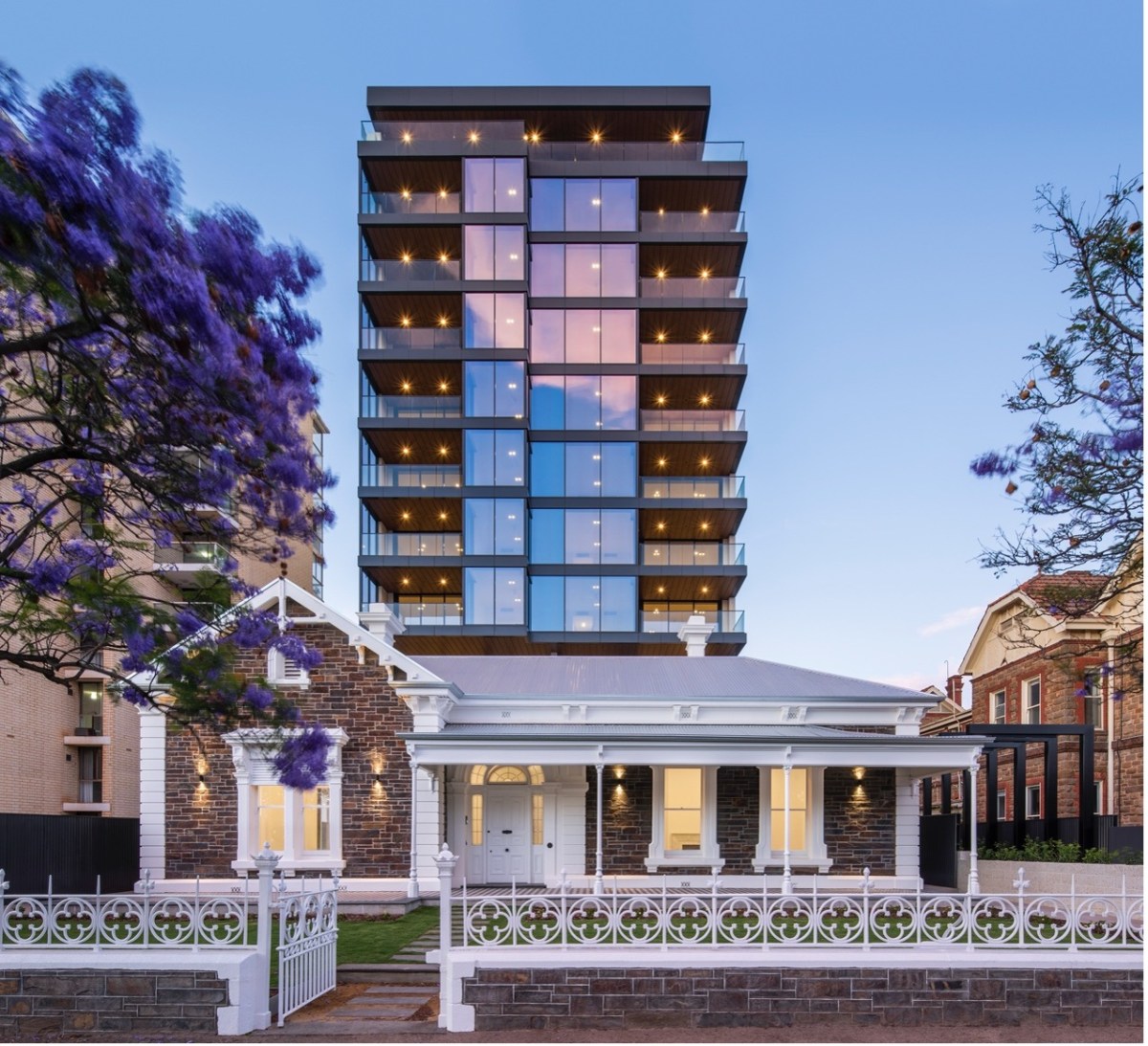
‘The Brougham’, by PACT Architects.
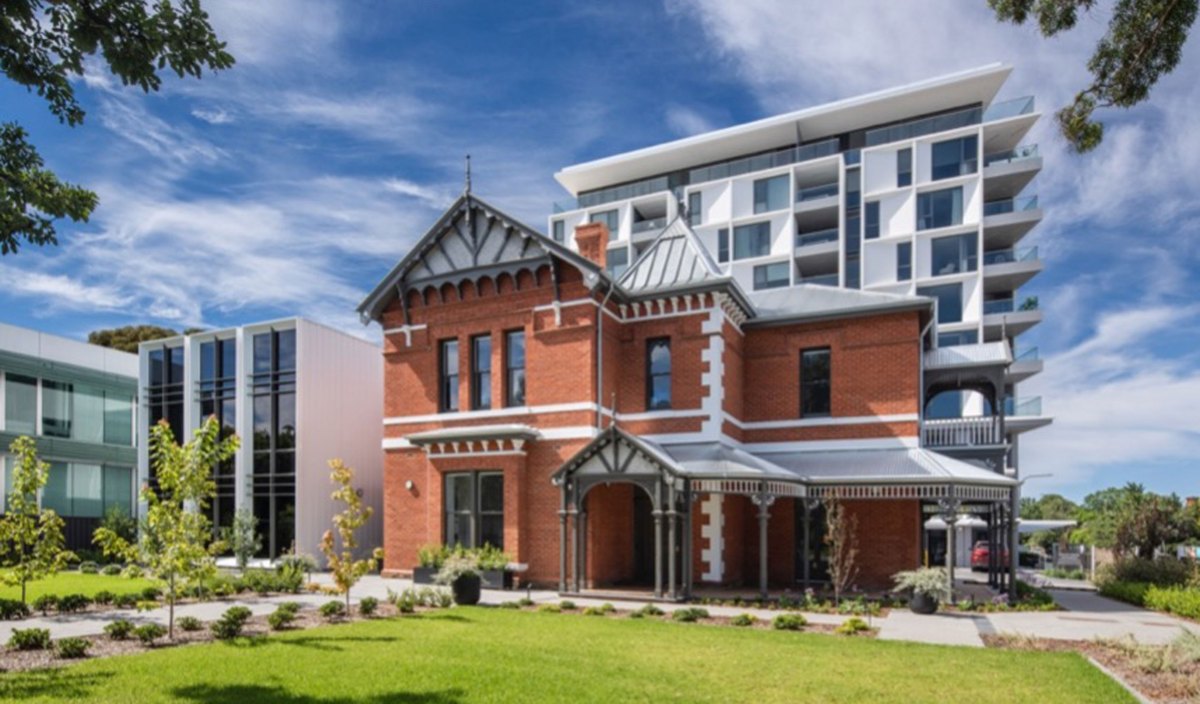
‘One On The Park’, incorporating St Margaret’s House, by JPE Design Studios. Photo: David Sievers
Finally, on a hill at Angaston, sits a contextual insertion of a different kind. Here, three houses organised around a central linear axis incorporate universal access between different levels to accommodate four generations. The resultant series of pavilions respect traditional roof forms and maximise northern exposure, cross-ventilation, and views to the township and hills landscape beyond.
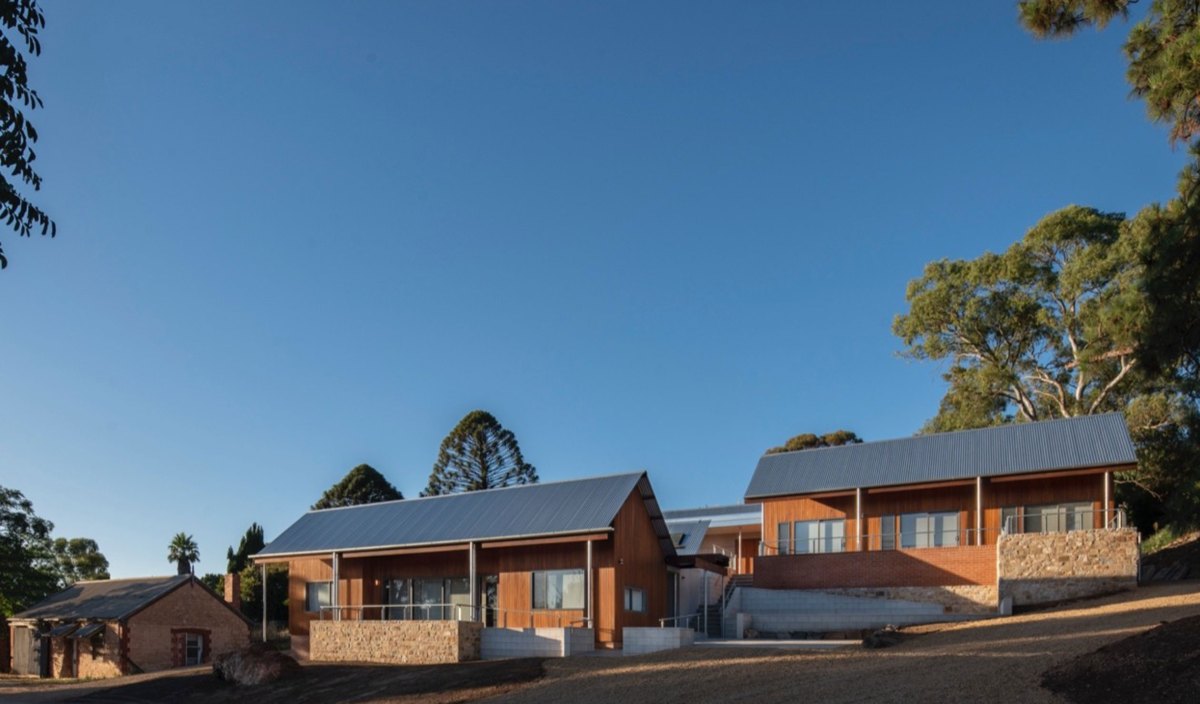
‘Angaston Hill’, by Taylor Buchtmann Architecture. Photo: Peter Barnes
Most of the winners in the 2022 SA Architecture Awards will be revealed on June 16, with the architecture medal (overall winner) to be announced at a live event on June 28.
Stephanie Johnston is an urban planner and freelance writer based between the city and Port Willunga.




